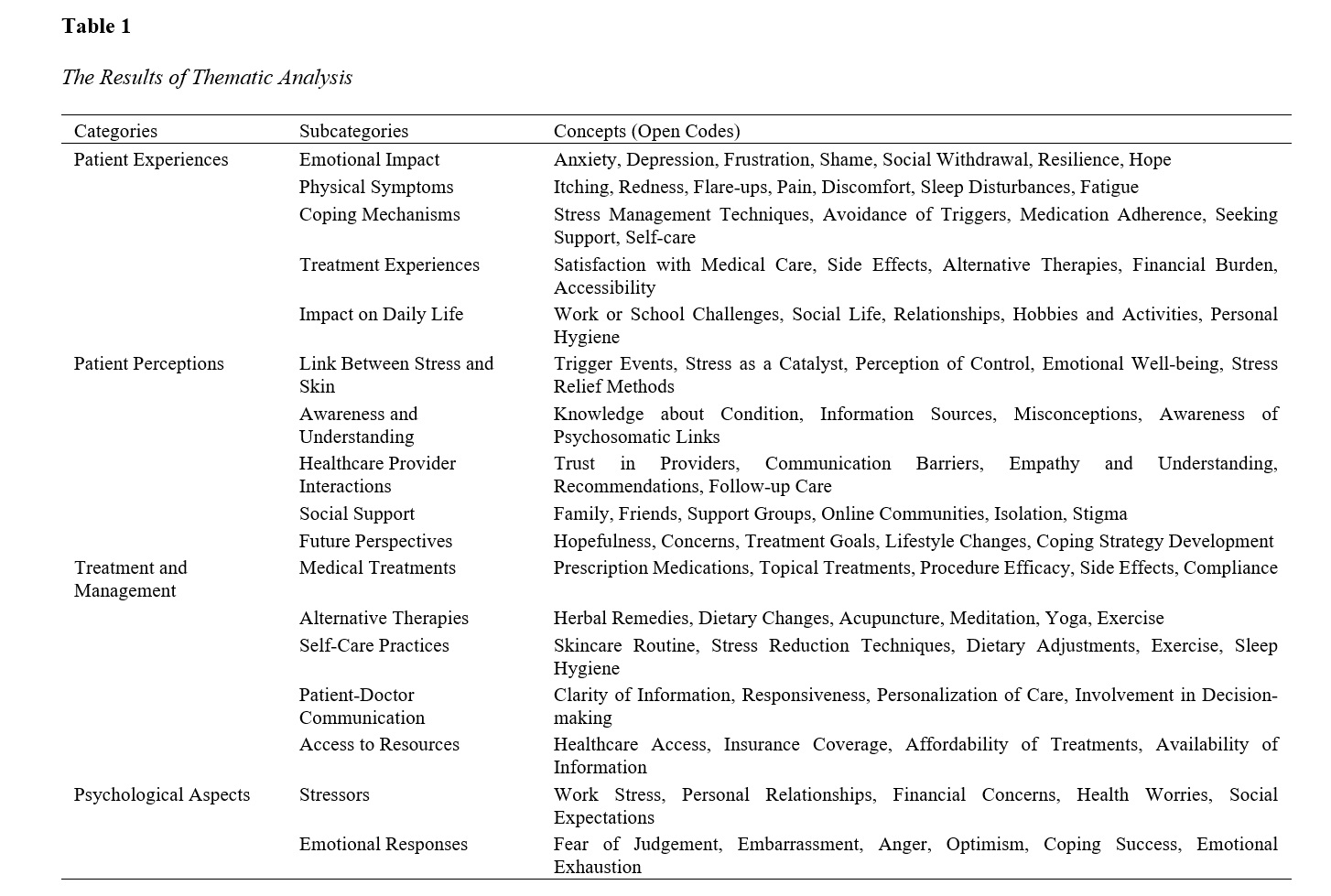The Psychosomatic Interface of Stress and Skin Disorders: Patient Experiences and Perceptions
Keywords:
Psychosomatic interface, Stress, Skin disorders, Patient experiences, Qualitative research, Thematic analysis, Holistic treatmentAbstract
To explore the psychosomatic interface between stress and skin disorders, focusing on patient experiences and perceptions. This study aims to uncover the multifaceted impact of stress on individuals with skin disorders, including the emotional, physical, psychological, and societal dimensions of their conditions. A qualitative research design was employed, utilizing semi-structured interviews with 31 participants diagnosed with stress-related skin disorders. Participants were selected through purposive sampling to ensure a diverse range of experiences. Data were analyzed using thematic analysis to identify key themes and categories, aiming for theoretical saturation to ensure comprehensive coverage of the topic. Five main themes emerged from the analysis: Patient Experiences, Patient Perceptions, Treatment and Management, Psychological Aspects, and Societal Impact. These themes encompassed a variety of categories such as Emotional Impact, Coping Mechanisms, Treatment Experiences, Link Between Stress and Skin, Awareness and Understanding, Medical Treatments, Alternative Therapies, Stressors, Emotional Responses, Mental Health Impacts, Stigma and Discrimination, and Economic Impact. The findings highlight the complex relationship between stress and skin disorders, revealing how stress exacerbates skin conditions, impacts patients' daily lives, influences their treatment experiences, and affects their psychological well-being and social interactions. The study elucidates the intricate psychosomatic relationship between stress and skin disorders, emphasizing the need for holistic treatment approaches that address both the psychological and physical aspects of these conditions. Integrating psychological support and stress management techniques with traditional dermatological treatments could significantly improve patient outcomes and quality of life.
Downloads

Downloads
Additional Files
Published
Issue
Section
License
Copyright (c) 2024 Maximus Monaheng Sefotho, Bylyre Serjanaj, Sheshachala Karthik (Author); Seyed Amir Saadati (Corresponding Author)

This work is licensed under a Creative Commons Attribution-NonCommercial 4.0 International License.






